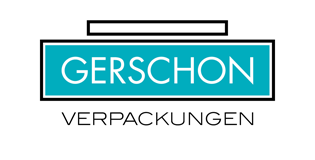
Look & Image: From drugstore brands to luxury cosmetics, and most types of pharmaceuticals, plastics cater for any need - offering the widest range of surfaces, shapes, colours, finishings and tailor made solutions. Bio-based Green PE and the very subtle, "organic" irregularity of PCR plastics are in demand and appealing to many environmentally conscious consumers. Innovations like Green PE, and recycled PCR ("Post Consumer Resin") are future-oriented and serve as a selling point.
Area of application: Greatest diversity, with product safety for most formulations, except for some biodegradable plastics. Limitation: especially thermoplastics commonly used in packaging can react with silicone oils, essential oils, acids, etc. and tolerate these only in highly diluted concentrations. This is usually not a problem with the quantities commonly used in cosmetics. However, concentrated serums are therefore usually sold in glass bottles.
Cost: Comparatively cheap.
Production: Petroleum, or as in the case of bio-based Green PE, sugar cane, cellulose etc., are processed at low temperatures (approx. 120°). PCR is remelted. Compared to other packaging, plastics require fewer raw materials. Gerschon plastic packaging also doesn’t contain BPA or similarly problematic additives, is food compliant and suitable for vegan and natural cosmetics.
Transport/Shipping: being lightweight, shatter-proof and resistant to most environmental influences, plastics are ideal for long-distance transport, air freight and the like, reducing costs and their carbon footprint.Recycling: If recycling systems are in place, as they are in many European countries, plastics can be optimally recycled (currently at a rate of approx. 60%), or used energetically via thermal treatment (incineration). Biobased polymers such as Green PE are recycled via the same systems as their traditional PE counterparts. Be careful with biodegradable plastics: these are chemically different from (Green) PE, PCR or PP and therefore cannot be recycled regularly. They take too long to biodegrade, hence do not belong in the compost bin, but in the residual waste.
Life cycle) Assessment Pros: Lightweight, shatterproof and durable, microbiologically safe, wide variety of designs and finishings, recyclable, manufactured and melted down at much lower temperatures than glass. Biobased Green PE is C02 neutral, as the plants that provide the raw material for it absorb CO2. Cons: Bad reputation within some demographics. Apart from Green PE, high CO2 emissions during production and the use of fossil raw materials. Green PE must be responsibly sourced in terms of land use and pesticides etc., and has a higher acidification and eutrophication rate than conventional plastic.
It may come as a surprise, but over their entire lifecycle, conventional and bio-based plastics are a sustainable choice for cosmetics and pharmaceuticals. Provided, however, that the packaging is distributed and disposed of in markets with established recycling systems and efficient incinerators.
The plastics we use at Gerschon:
PCR/PIR Post-Consumer Recycled Resins or Post-Industrial Recycled Resins are recycled granules, usually made of PP or PE, that can be re- recycled like their virgin PP or PE versions.
GREEN PE is a carbon-neutral PE made from renewable, biological raw materials such as sugar cane, that are technically almost identical to conventional PE and are recycled in the same way.

PET/PETE Polyethylene terephthalate - the most common plastic for beverage bottles and disposable tableware. It is currently recycled by grinding it into granules from which the above products can be remanufactured.

HDPE High Density Polyethylene is used in the manufacture of bottles, bottle caps, foils and films. HDPE is considered one of the least harmful plastics for humans, and items made from it can be used over a long period of time. Ground into granules, it is reused in production processes.

LDPE Low Density Polyethylene, is used for the production of foils due to its retention of flexibility even at low temperatures (down to -60°C). LDPE waste is processed like PET, HDPE and PVC.

PP Polypropylene - this polymer, together with polyethylene derivatives, is the most widely used plastic and the least harmful to human health. PP is easily recyclable thanks to its thermoplastic properties. Its recycling is possible by melting it down or grinding it into fine granules that are used to make new products.
SAN is a transparent and rigid copolymer plastic made of styrene and acrylonitrile.
HPM Urea moulding compound, also UF, belongs to the group of aminoplastics. Urea resins made from urea and formaldehyde are mixed with fillers and reinforcing materials (mainly cellulose-based) and thus come from renewable raw materials.
Sources: Federal Environment Agency Germany, Federal Office for the Environment Switzerland, Deutsche Handwerkszeitung, Federal Association of Consumer Centres
You can also download the key facts about all materials here:
 Deutsch
Deutsch
 English
English
